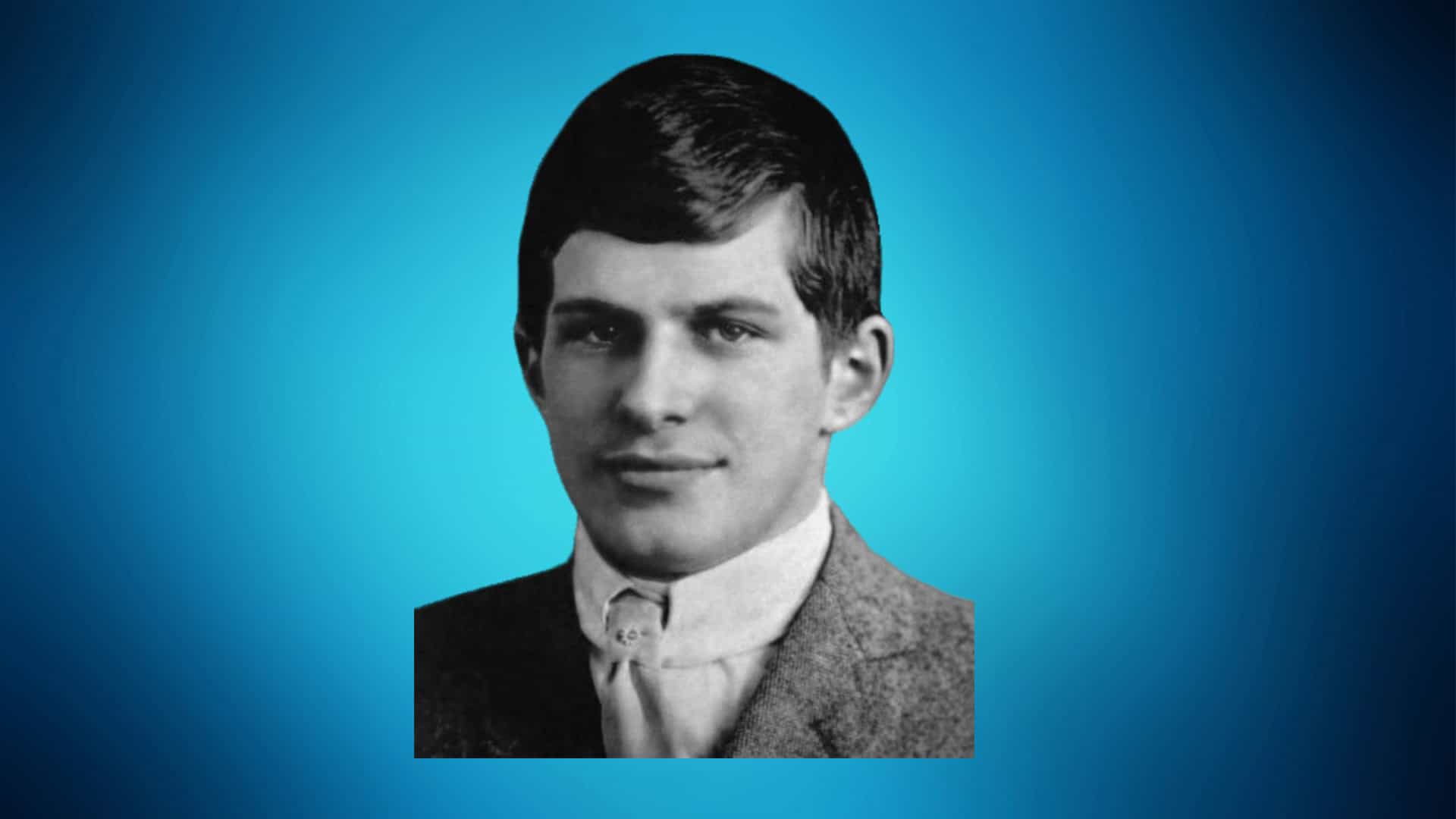William James Sidis might have been one of the smartest people ever, with some reports suggesting an IQ between 250 and 300.
However, these estimates are speculative, as no formal IQ test result is documented. Born in New York City in 1898, he was the son of Boris Sidis, a psychologist, and Sarah Sidis, one of the few women in medical school at that time. From a young age, it was clear that William was special. He reportedly could read newspapers by the age of 18 months and entered Harvard at 11 years old.
Despite his intelligence, William faced many challenges. He was teased by students and faced pressure from the media, who often painted him in a negative light. As he grew older, he distanced himself from his parents and pursued a life far from the public eye. Whether his legacy is seen as one of missed opportunity or misunderstood potential, William’s story remains fascinating and complex.
The Genius of William James Sidis
A Mind Brighter Than Einstein?
William James Sidis is often claimed to have had an IQ between 250 and 300, surpassing the estimated 160-180 of Albert Einstein. However, these figures are largely speculative. No verifiable records exist of Sidis taking an IQ test, making it impossible to confirm such high estimates. His remarkable mental ability, though, was well-documented, and he is considered one of the most intelligent individuals in modern history.
Learning Letters at Six Months
There are claims that William James Sidis mastered the alphabet by six months old. While these claims are often repeated, they are based on anecdotes rather than documented evidence. What is known is that he demonstrated extraordinary intellectual abilities at a very young age. By 18 months, he could reportedly read the New York Times, showing a proficiency far beyond his years.
Attending Harvard at 11 Years Old
At just 11 years old, Sidis was indeed accepted into Harvard University, making him one of the youngest students ever to attend the prestigious institution. His time there was notable; he even gave a lecture on the fourth dimension to the university’s Math Club, demonstrating his advanced understanding of mathematics. Although some students and the media viewed him as an oddity, his academic achievements were nothing short of extraordinary for someone his age.
Family Life and Early Years
Parents Boris and Sarah Sidis
William James Sidis was born to Boris and Sarah Sidis, both Ukrainian Jewish immigrants. Boris was a well-known psychologist, and Sarah was a physician. They were highly educated and placed a strong emphasis on intellectual development. Boris, a pioneer in psychology, believed in nurturing his son’s intellect from a young age, using experimental methods that some later criticized as overly intense.
The Sidises’ Unique Educational Approach
William’s extraordinary intelligence was attributed by his parents to their unique approach to education. From infancy, Boris and Sarah treated him like an adult, encouraging him to solve problems on his own. By six months old, he reportedly knew the alphabet, and by 18 months, he was reading the New York Times. By age eight, he could speak several languages, including Latin, Greek, German, French, Russian, Hebrew, Turkish, and Armenian, and he invented his own language, Vendergood.
Achievements and Thoughtful Goals
Language Skills and New Language Creation
By the age of eight, William reportedly knew eight languages, and he did indeed create his own language called Vendergood. This language incorporated elements of Latin and Greek, showcasing his linguistic creativity.
Grasp of Advanced Math
At just eleven years old, William attended Harvard and astounded those in attendance with a lecture on the fourth dimension, demonstrating a deep understanding of complex mathematical concepts.
Blueprint for a Perfect Society
William wrote about his vision for a perfect society in a document known as “The Book of Vendergood” and other writings. His ideas included concepts like technocracy and meritocracy, which were advanced for his time, but the details of these works have not been widely published.
Issues and Public Viewpoint
Dealing with Public and Media Scrutiny
William’s life was heavily scrutinized by the media, which often sensationalized his achievements and struggles. The press frequently depicted him as an oddity, contributing to the challenges he faced in maintaining a normal life.
The False Notion of Mental Collapse
A persistent rumor suggested that William had a mental breakdown after his lecture on the fourth dimension at Harvard. In reality, he did not have a mental collapse; the story was exaggerated by the media. He did, however, experience health issues related to the stress of his intense academic life.
Challenges with Social Life and Age Gaps
Being a child prodigy, William faced significant social challenges. At Harvard, he was much younger than his peers, making it difficult for him to relate to them. His intellectual pursuits further isolated him from typical social interactions.
Personal Experiences and Beliefs
Disregard for Traditional Pathways and Formal Education
William Sidis became disillusioned with formal education and the expectations placed on him. He valued his intellectual autonomy and chose to live a more secluded life, rejecting the conventional academic and career paths.
Anti-War Views and Social Involvement
William held strong anti-war views and was involved in political activism, particularly during World War I. He was arrested during a May Day rally in Boston and faced legal troubles for his refusal to register for the draft. His political beliefs were deeply rooted in his commitment to social justice and individual rights.
Love and Relationship with Martha Foley
While there is no verifiable evidence of a romantic relationship with Martha Foley, it is known that William had few personal relationships and lived a largely solitary life. Stories of unrequited love or brief romantic interests are part of the mythology that surrounds his life, but they lack substantial documentation.
Final Years and Legacy
William James Sidis spent his final years in relative obscurity, working in menial jobs and avoiding the public eye. He moved between cities, spending much of his time in Boston, where he ultimately passed away from a cerebral hemorrhage at the age of 46.
Despite his immense intelligence and early academic achievements, William’s life did not follow the path many had expected. His work, though brilliant, did not receive the attention it might have deserved. His legacy is complex, marked by extraordinary talent yet also by the challenges of living up to the often unrealistic expectations placed upon him. William James Sidis remains a figure of fascination, symbolizing both the heights of human potential and the profound difficulties in navigating such a gift.









